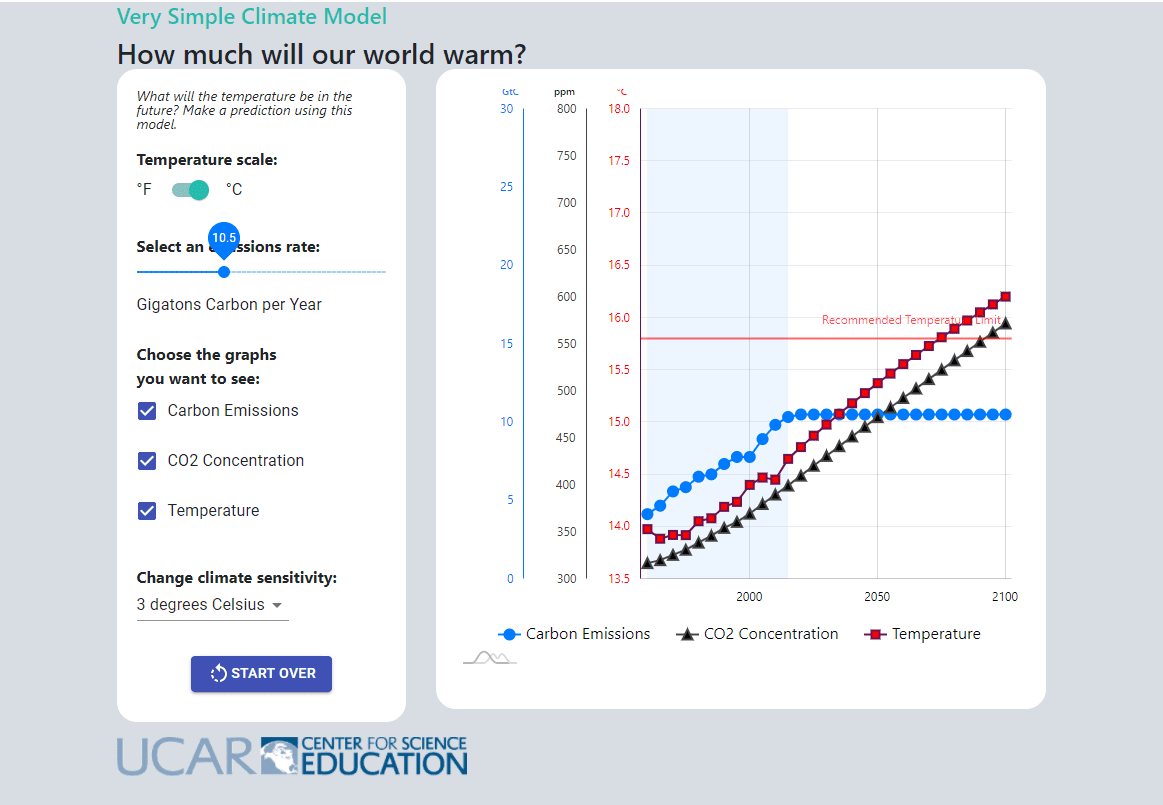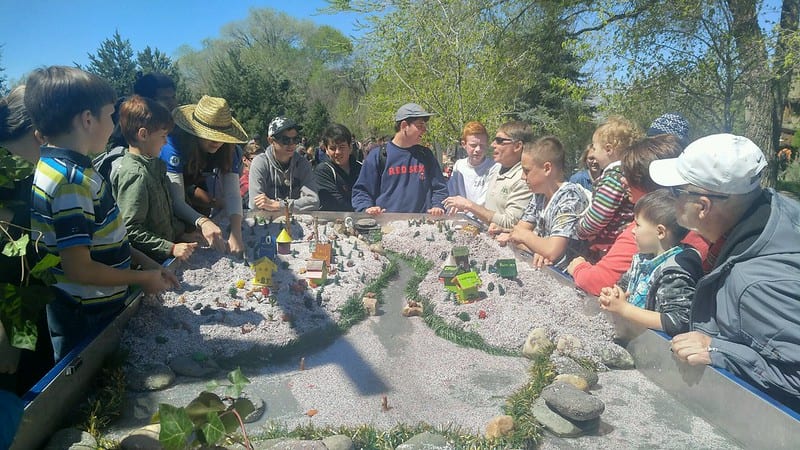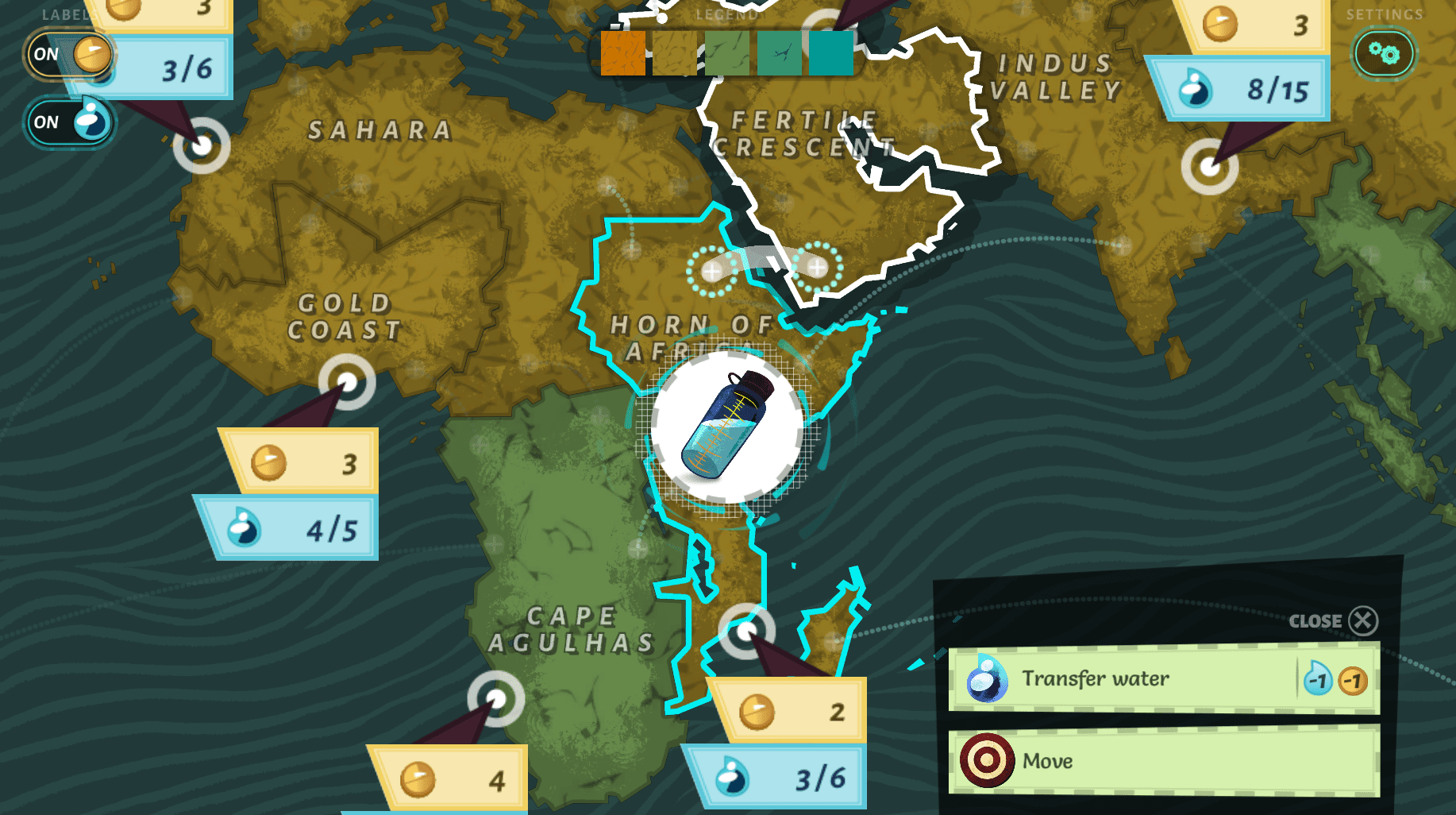With a global population nearing 8 billion people, our impact on natural systems is widespread and complex, and in order to understand our impact, we need tools that help us simplify the staggering number of factors that are at play. We drink water, eat food, and use products that originate in natural systems. Even minor behaviors have hidden environmental footprints. All of these interactions can be overwhelming to consider all at once. Models help us simplify complex interactions in order to deepen our understanding of the system. They help us focus on a small number of factors and possible outcomes, in order to understand implications of individual actions.
Today, we explore five reasons to use models to teach human-environment interactions and share some of our favorite non-PopEd lessons as examples. Links to all the modeling lessons are included below!
1. Models Tackle Complex Systems by Simplifying Inputs and Outputs
Climate change is perhaps one of the most complex examples of human behavior affecting the environment. Our consumption of carbon dioxide contributes to global warming, but that process can be difficult to understand. Models can simplify the process in ways that even younger students can follow.
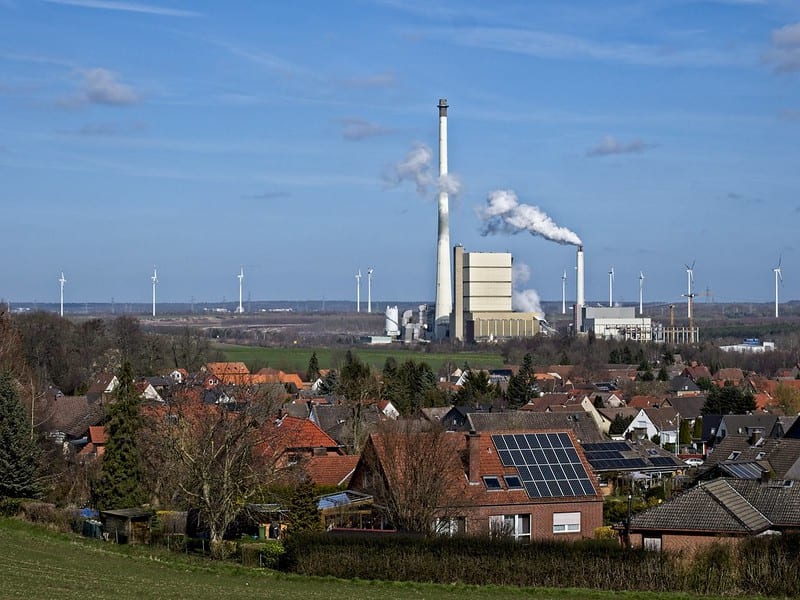
In this Carbon Cycle Role-Play activity (grades 4-12) from the California Academy of Sciences, students role-play CO2 as they travel through a simplified carbon cycle and then model the ways that humans alter the natural cycles. Students end the activity by drawing a map of where they traveled in the carbon cycle, yet another model to visualize a complex system.
Once students understand some basics of carbon dioxide, they can explore the link between CO2 and global warming using the Very Simple Climate Model Activity from the UCAR Center for Science Education (grades 9-12). This activity uses a digital tool to graph global temperature in relation to carbon emissions. Students change the emissions rates for CO2 and the model calculates and graphs the warming potential of carbon concentrated in the atmosphere. In this case, global warming is simplified to only a few variables, and students can manipulate those variables to determine outcomes.
2. Models Explore Cause and Effect Iteratively
To really understand how different factors in a system contribute to an outcome, it can be helpful to run the experiment multiple times. Models allow students to alter inputs in a system in strategic ways in order to achieve specific outcomes.
In the Sustainable Fishing simulation from the California Academy of Science (grades 4-12), students develop strategies for maintaining fish stocks through multiple fishing seasons. Inevitably students will exhaust the fish in their model ocean. In between rounds, students alter their fishing agreements and retry the simulation in an effort to find a sustainable balance between ecosystem survivability and human economic and food needs.
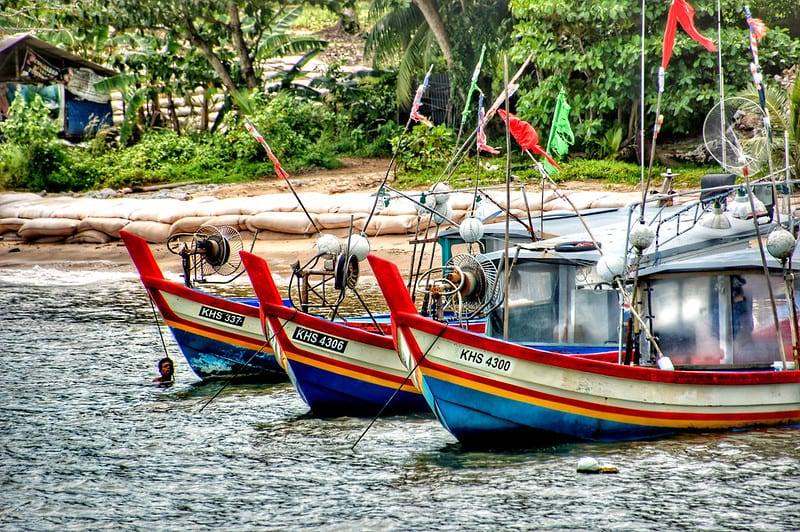
The Environmental Protection Agency developed the Generate game (grades 6-12) to model the opportunity costs of generating electricity with coal, nuclear power, wind, solar energy, and natural gas. Students start with a goal of creating the greatest possible electricity output for the lowest possible cost. In different iterations, students must also balance CO2 emissions with costs. Each round places a greater importance on environmental impacts, requiring students to redesign their power grids over and over.
3. Models Help Visualize Complex Systems
Some models also have the advantage of turning complex thoughts and relationships into concrete images, which can be especially helpful for younger learners. Early elementary students can easily describe what happens to water that falls on a road in front of them, but may have a more difficult time understanding where the water travels next.
PBS Learning Media’s Water in Your World (grades 1-4) steps students through the process of building their own watersheds. The Monterey Bay Aquarium has a similar activity Shower Curtain Watershed for older learners (grades 3-5). In both cases, students explore how water carries objects, including pollution, from one place to another. The models help students “see” where water travels after it falls as rain, and helps students visualize the impacts of human pollution in a watershed.
4. Models Encourage Real-Life Math Skills
One of the advantages of many of these models is the natural integration of mathematics. For example, students analyze graphs in the Very Simple Climate Model and practice multiplication, division, and algebra skills in Generate (both mentioned previously).
In the National Oceanic and Atmospheric Association’s activity book Changing Your World with NOAA, students collect and analyze their own data. Activity 6 guides students through the process of building a model of an atmosphere in a bottle. Students fill one bottle with a high CO2 concentration and leave one control bottle with a natural mix of gasses. Both bottles are left in the sun to see which heats faster. Students then chart and graph temperature changes over time to draw conclusions about greenhouse gases and global warming. The incorporation of data collection, organization, and analysis is a natural part of the activity, and blends seamlessly with the science.
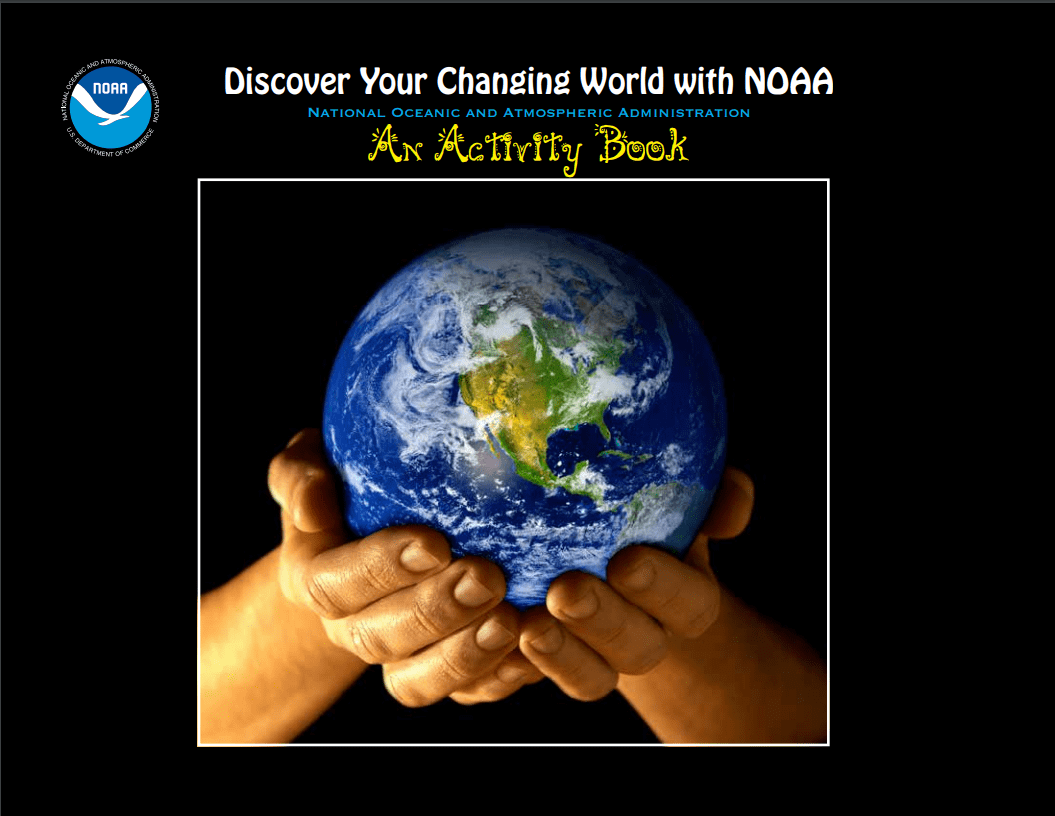
5. Models Inspire Collaborative and Imaginative Learning with a Focus on Solutions
Modelling often encourages collaboration and creativity in students. In the process of building the model, students often need to troubleshoot a design, alter inputs, or agree to changes in the model or system that might be outside of initial parameters. Models also help students develop solutions with the greatest impact for the least cost.
In NOVA’s Who Will Take the Heat? activity (grades 9-12), students play the roles of Chinese and American leaders negotiating an international climate agreement. They model the decision-making process between world leaders who balance the needs of their citizens with global climate goals. Students receive role card with confidential instructions based on their character’s goals. The actual conversations hinge on the creativity and engagement of individuals, and collaborative planning and negotiation among teams from each country.

Equity and empathy take center stage with the Smithsonian Science Education Center’s Aquation: The Freshwater Access Game (grade 5). This free digital game encourages students to strategize on how to provide enough safe drinking water to every nation on the planet. The tool feels like a game and motivates strategic thinking, making it an engaging option for individual students in a remote learning environment.
Join us for more examples of models from PopEd’s resource collection
If you enjoyed these resources, watch our free on-demand Earth Day webinar. We highlight our favorite Population Education models for grades K-8 to teach about human impacts on the planet, and hopefully inspiring students to take action in their own communities.
Throughout Spring 2021, PopEd will be exploring how to use models in the classroom to teach about real-world environmental and social issues. For free access to PopEd modeling lessons and additional resources, follow us on Facebook. #PopEdTheme #PopEdUsingModels
Image credits: Smoke stack (Buschhaus – Power Plant – Surroundings #4 by senpatientulo); The Very Simple Climate Model (UCAR Center for Science Education); Boats (Boats three by Bernard Spragg. NZ); Demonstration (Water Trailer Demonstration by Intermountain Forest Service, USDA Region); Discover Your Changing World (NOAA); Flags (20121219-OSEC-LSC-0142 by U.S. Department of Agriculture); Aquation (Smithsonian Science Education Center)



